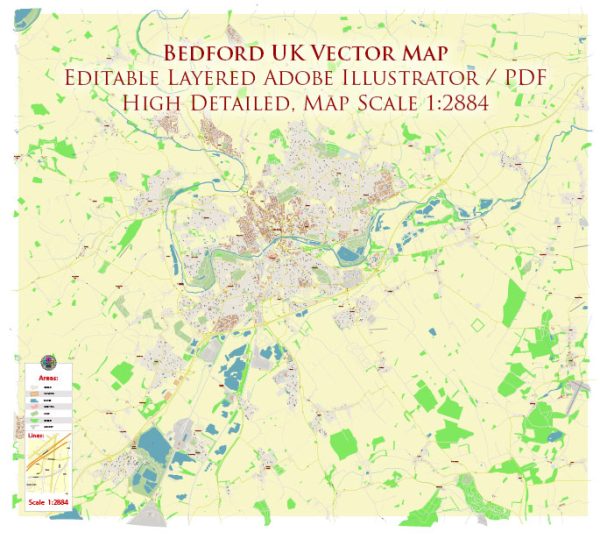Bedford, located in the county of Bedfordshire, England, has a rich history of urban development that spans over a thousand years. The town’s development can be summarized through various key historical periods:
- Early Settlement (c. 9th Century): Bedford’s history begins with its establishment as a Saxon settlement in the 9th century. It was situated along the River Great Ouse, which made it a vital location for trade and transportation.
- Medieval Period (11th – 15th Century): Bedford grew as a market town during the medieval period. It was granted a royal charter in the early 12th century, which allowed it to hold markets and fairs. The town’s castle, built by King Henry I, played a significant role in its defense and development during this time.
- Tudor and Stuart Eras (16th – 17th Century): Bedford continued to thrive as a market town and became known for its trade in wool and lace. The town’s expansion was limited by the old town walls, which can still be seen in parts today.
- Industrial Revolution (18th – 19th Century): The Industrial Revolution brought significant changes to Bedford’s urban landscape. The town’s population grew, and industrialization led to the development of textile and engineering industries. The River Great Ouse and the arrival of the railway in the mid-19th century further facilitated trade and transportation.
- Victorian Era (19th Century): The Victorian era saw Bedford expand beyond its medieval boundaries. Many of the town’s notable buildings, including the Corn Exchange and the Bedford Park, were constructed during this period. The town’s population continued to grow, and improved infrastructure, such as gas lighting and sanitation systems, were introduced.
- 20th Century: Bedford’s development in the 20th century was marked by urban expansion and modernization. The town saw population growth due to its role as a center for the brickmaking and engineering industries. It also played a significant role in supporting the war effort during both World War I and World War II.
- Post-War Period and Modern Development: After World War II, Bedford experienced further urban development. New residential areas were constructed to accommodate the growing population. The town also diversified its economy, with industries like electronics and telecommunications playing a role.
Today, Bedford is a thriving market town with a rich cultural heritage, and it continues to evolve and adapt to the needs of its residents and businesses. Its history is reflected in the mix of architectural styles, from medieval to modern, and the town’s cultural and economic vitality. The River Great Ouse remains an essential feature of the town’s landscape, contributing to its appeal and development.


 Author: Kirill Shrayber, Ph.D.
Author: Kirill Shrayber, Ph.D.